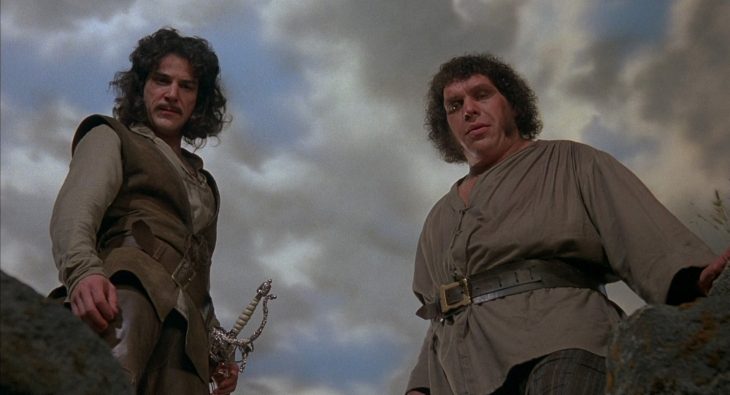
The Writer Vs. The Screenwriter
The Princess Bride is a widely known and critically acclaimed film based on the 1973 novella with the same name. Written by William Goldman, the story is set within a frame narrative, and the film retains this aspect of the story strongly by jumping between the fantasy story and having a grandfather read the story to his sick grandson. The film stays strongly loyal to the original text, and the most likely and obvious reason for this is because Goldman wrote the screenplay for the film himself over a decade after he wrote the book. While The Princess Bride is a popular, family-friendly story with elements appealing to different interests, the story is exceptional because Goldman knew how to tell an interesting story not just on the page, but on the screen.
While The Princess Bride was published in 1973, Goldman already had experience writing for films, one example being Butch Cassidy and the Sundance Kid. It comes as no surprise that when The Princess Bride was made into a movie, he wrote the screenplay himself. The original story reads like a screenplay at times – whether that can be attributed to Goldman’s experience screenwriting or the frame narrative of the writer (within the story, not Goldman himself) abridging the fictional story for the reader by cutting out the unimportant or uninteresting, satirical parts, which is what often happens when a full novel gets adapted into an hour and a half or two hour movie – which is to say there is not much description as much fantasy fiction fills the many pages with. Rather, Goldman tells his story by including only the interesting parts, in other words, the Hollywood scenes that a child would remember.
Another example, or perhaps a foil example, of this is my experience with the prequel Star Wars trilogy (hear me out): as a child, I grew up watching Star Wars, but the only moments I found very engaging or memorable from them were the action-y, lightsaber-filled battle scenes, of which there are many in Episodes I through III. Re-watching them years later, I have realized that the bulk of the plot and conflict in the prequel trilogy is largely political – all of which went straight over my head as a child.
My point is, The Princess Bride is more lightsaber battles than it is political drama. What Goldman gets right in The Princess Bride is a crucial skill most creative writers will advise the young writer trying to create fiction (or any good writing, depending on your perspective): show, don’t tell.
When some writers hear this, myself included at first, they focus on drawing out every little detail in every scene – the readers suddenly need to know the exact colors and cut of the jewels embossed in the polished silver goblet that the small goblin-esque man was sitting in front of that reminded the protagonist of this one time – and now I’m closing the book, sorry Tolkien.
I’m not saying that fiction writers should not be descriptive, nor am I implying that Tolkien is not a good writer, but when books like The Lord of the Rings are made into films, even with the extended cuts, there is inevitably some of the art and beauty in the novels cut out. Perhaps this is a bad example, as I have not read all of Tolkien’s series nor seen the films, but with a story like The Princess Bride, the fullness of the story can be enjoyed on the screen. This is more a point that maybe some stories or novels should not be made into films, not that all stories and novels should be written in a way that allows them to be fully expressed on screen. Goldman does not go to incredible lengths to provide his reader with the artistic details of writing – he tells his story.
There is even a scene in the book that is not found in the movie which serves as a catalyst to Prince Humperdinck’s search for a bride – Princess Noreena, who he is supposed to marry, is revealed to be bald during a comedic scene of a banquet, after which Humperdinck will not marry her. When I sat down to watch the film all the way through for the first time, I was shocked to not see the scene in the movie, not because it was essential to the plot, but because I had seen bits and pieces of The Princess Bride over the years, and I was certain I had seen the scene in the film. After trying to find the movie scene, I came to the realization that it must have just been Goldman’s great writing that led me to seeing the whole scene play out in my head as though it were a memory. Again, no excruciating details – just the facts of his fiction.
Goldman wrote The Princess Bride practically – almost as though he intended it to be made into a film – and it works well. If you are a fan of the film but haven’t read the story by William Goldman, I highly recommend it.